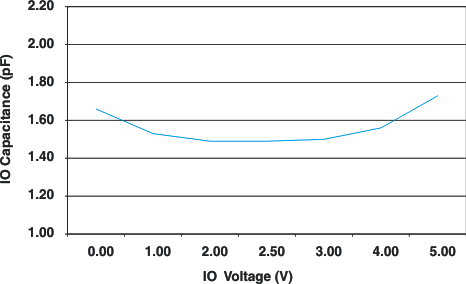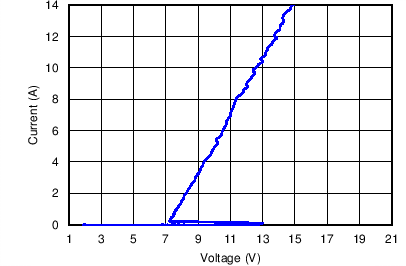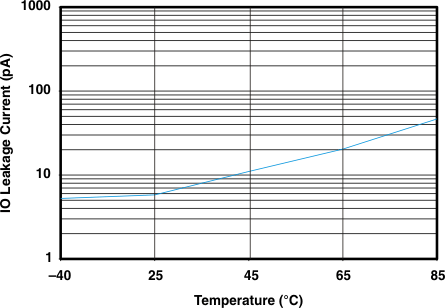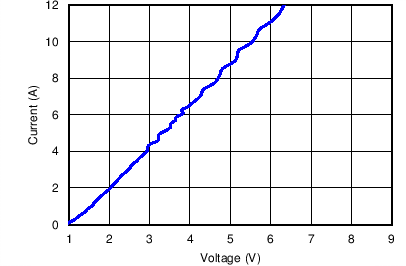SLLS684I July 2006 – March 2016 TPD2E001
PRODUCTION DATA.
- 1 Features
- 2 Applications
- 3 Description
- 4 Revision History
- 5 Pin Configuration and Functions
- 6 Specifications
- 7 Detailed Description
- 8 Application and Implementation
- 9 Power Supply Recommendations
- 10Layout
- 11Device and Documentation Support
- 12Mechanical, Packaging, and Orderable Information
封装选项
机械数据 (封装 | 引脚)
散热焊盘机械数据 (封装 | 引脚)
订购信息
6 Specifications
6.1 Absolute Maximum Ratings
over operating free-air temperature range (unless otherwise noted)(1)(1) Stresses beyond those listed under Absolute Maximum Ratings may cause permanent damage to the device. These are stress ratings only, and functional operation of the device at these or any other conditions beyond those indicated in the operational sections of the specifications is not implied. Exposure to absolute-maximum-rating conditions for extended periods may affect device reliability.
6.2 ESD Ratings
| VALUE | UNIT | |||
|---|---|---|---|---|
| V(ESD) | Electrostatic discharge | Human body model (HBM), per ANSI/ESDA/JEDEC JS-001, all pins(1) | ±15000 | V |
| Charged device model (CDM), per JEDEC specification JESD22-C101, all pins(2) | ±1000 | |||
(1) JEDEC document JEP155 states that 500-V HBM allows safe manufacturing with a standard ESD control process.
(2) JEDEC document JEP157 states that 250-V CDM allows safe manufacturing with a standard ESD control process.
6.3 ESD Ratings: Surge Protection
| VALUE | UNIT | |||
|---|---|---|---|---|
| V(ESD) | Electrostatic discharge | IEC 61000-4-2 contact | ±8000 | V |
| IEC 61000-4-2 air-gap discharge | ±15000 | |||
6.4 Recommended Operating Conditions
over operating free-air temperature range (unless otherwise noted)| MIN | MAX | UNIT | ||
|---|---|---|---|---|
| TA, operating free-air temperature | –40 | 85 | °C | |
| Operating voltage | VCC pin | 0.9 | 5.5 | V |
| IO1, IO2 pins | 0 | VCC | ||
6.5 Thermal Information
| THERMAL METRIC(1) | TPD2E001 | UNIT | ||||
|---|---|---|---|---|---|---|
| DRY (USON) | DRL (SOT) | DRS (WSON) | DZD (SOP) | |||
| 5 PINS | 5 PINS | 6 PINS | 4 PINS | |||
| RθJA | Junction-to-ambient thermal resistance | 374.2 | 257.6 | 91.9 | 213.7 | °C/W |
| RθJC(top) | Junction-to-case (top) thermal resistance | 223.4 | 97.6 | 106.9 | 93.5 | °C/W |
| RθJB | Junction-to-board thermal resistance | 227.8 | 74.2 | 64.8 | 56.8 | °C/W |
| ψJT | Junction-to-top characterization parameter | 52.9 | 7.5 | 10.2 | 4.2 | °C/W |
| ψJB | Junction-to-board characterization parameter | 224.8 | 73.7 | 64.9 | 56.4 | °C/W |
| RθJC(bot) | Junction-to-case (bottom) thermal resistance | 87.5 | N/A | 29.9 | N/A | °C/W |
(1) For more information about traditional and new thermal metrics, see the Semiconductor and IC Package Thermal Metrics application report, SPRA953.
6.6 Electrical Characteristics
VCC = 5 V ± 10%, TA = –40°C to 85°C (unless otherwise noted)| PARAMETER | TEST CONDITIONS | MIN | TYP(1) | MAX | UNIT | ||
|---|---|---|---|---|---|---|---|
| VCC | Supply voltage | 0.9 | 5.5 | V | |||
| ICC | Supply current | 1 | 100 | nA | |||
| VF | Diode forward voltage | IF = 10 mA | 0.65 | 0.95 | V | ||
| VBR | Breakdown voltage | IBR = 10 mA | 11 | V | |||
| VC | Channel clamp voltage(2) | TA = 25°C, ±15-kV HBM, IF = 10 A |
Positive transients | VCC + 25 | V | ||
| Negative transients | –25 | ||||||
| TA = 25°C, ±8-kV contact discharge (IEC 61000-4-2), IF = 24 A |
Positive transients | VCC + 60 | |||||
| Negative transients | –60 | ||||||
| TA = 25°C, ±15-kV air-gap discharge (IEC 61000-4-2), IF = 45 A |
Positive transients | VCC + 100 | |||||
| Negative transients | –100 | ||||||
| IIO | Channel leakage current | VI/O = GND to VCC | –1 | 1 | nA | ||
| CIO | Channel input capacitance | VCC = 5 V, bias of VCC / 2; ƒ = 10 MHz | 1.5 | pF | |||
(1) Typical values are at VCC = 5 V and TA = 25 °C
(2) Channel clamp voltage is not production tested.
6.7 Typical Characteristics

 Figure 3. TLP IO to GND (DRS Package)
Figure 3. TLP IO to GND (DRS Package)

 Figure 4. TLP GND to IO (DRS Package)
Figure 4. TLP GND to IO (DRS Package)